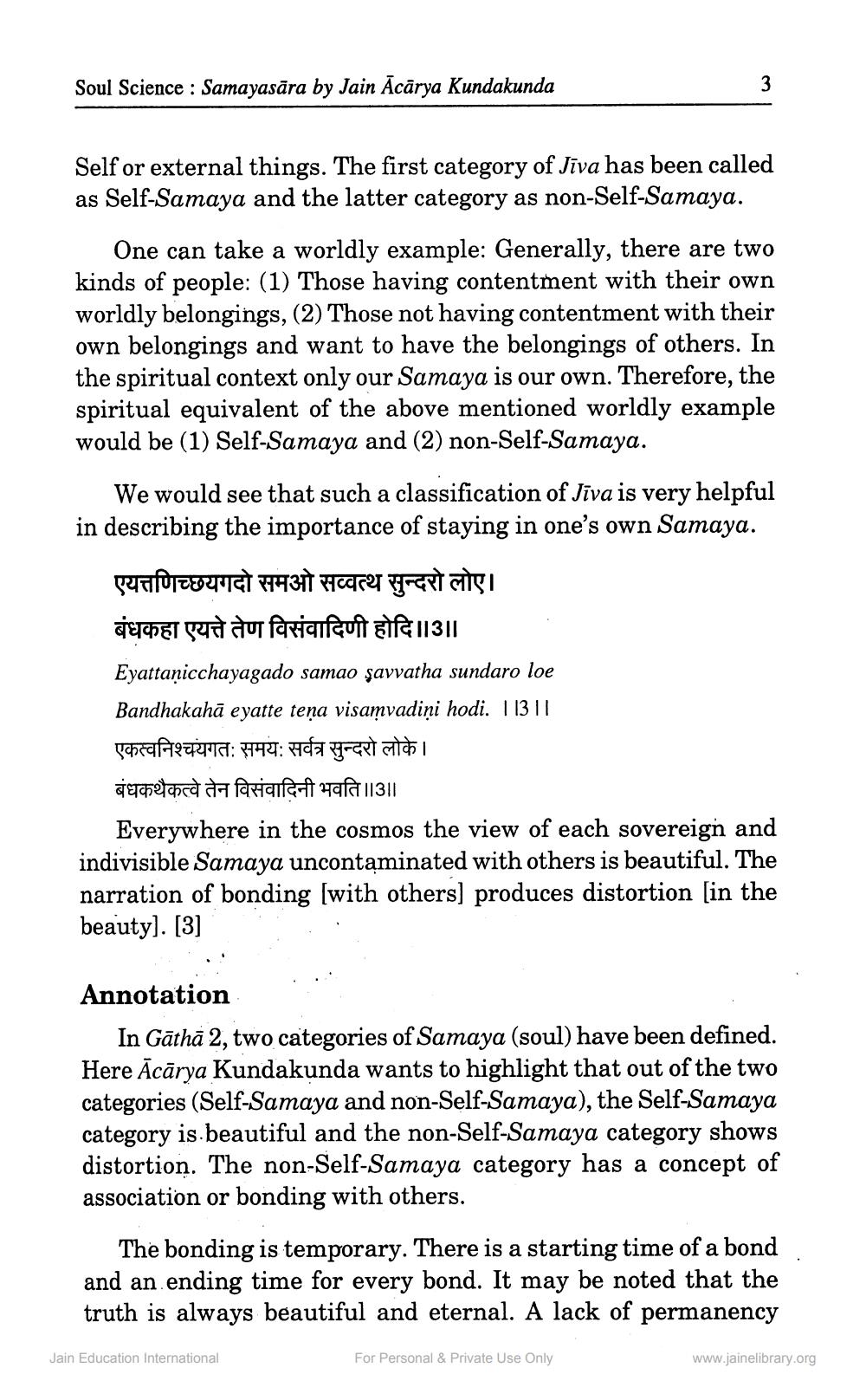________________
Soul Science: Samayasara by Jain Acarya Kundakunda
3
Self or external things. The first category of Jiva has been called as Self-Samaya and the latter category as non-Self-Samaya.
One can take a worldly example: Generally, there are two kinds of people: (1) Those having contentment with their own worldly belongings, (2) Those not having contentment with their own belongings and want to have the belongings of others. In the spiritual context only our Samaya is our own. Therefore, the spiritual equivalent of the above mentioned worldly example would be (1) Self-Samaya and (2) non-Self-Samaya.
We would see that such a classification of Jiva is very helpful in describing the importance of staying in one's own Samaya.
एयत्तणिच्छयगदो समओ सव्वत्थ सुन्दरो लोए ।
बंधकहा एयत्ते तेण विसंवादिणी होदि ॥3॥
Eyattanicchayagado samao savvatha sundaro loe Bandhakahā eyatte tena visamvadini hodi. 113 || एकत्वनिश्चयगतः समयः सर्वत्र सुन्दरो लोके ।
बंधकथैकत्वे तेन विसंवादिनी भवति ॥3॥
Everywhere in the cosmos the view of each sovereign and indivisible Samaya uncontaminated with others is beautiful. The narration of bonding [with others] produces distortion [in the beauty]. [3]
Annotation
In Gāthā 2, two categories of Samaya (soul) have been defined. Here Acārya Kundakunda wants to highlight that out of the two categories (Self-Samaya and non-Self-Samaya), the Self-Samaya category is beautiful and the non-Self-Samaya category shows distortion. The non-Self-Samaya category has a concept of association or bonding with others.
The bonding is temporary. There is a starting time of a bond and an ending time for every bond. It may be noted that the truth is always beautiful and eternal. A lack of permanency
For Personal & Private Use Only
Jain Education International
www.jainelibrary.org




